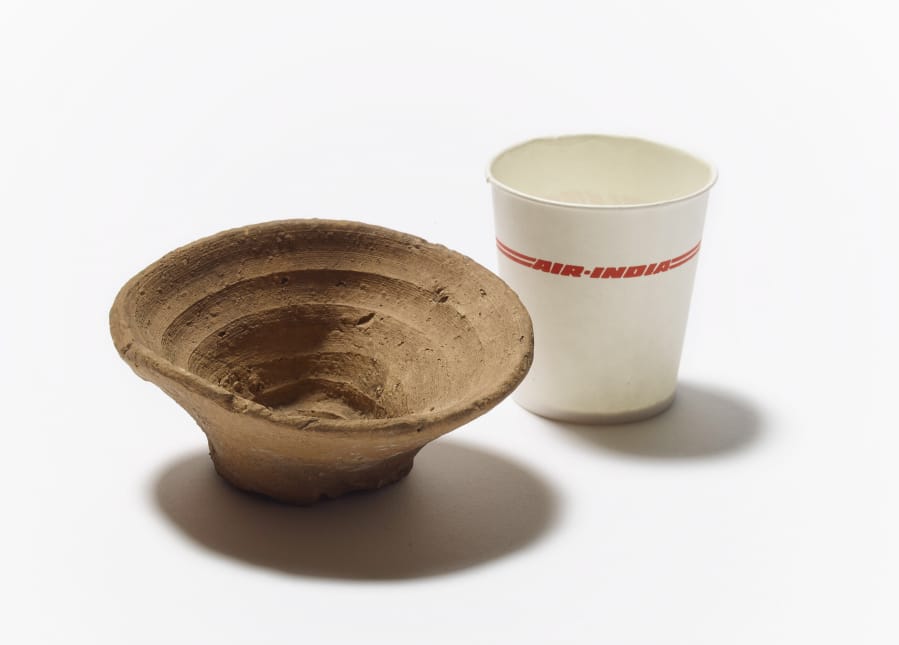About 3,500 years separate the two cups that will sit next to each other at the heart of a new museum exhibit in London.
One is a paper discard from the 1990s. Researchers believe the other, made from clay, may have held wine before it was thrown out after an ancient party on the island of Crete.
They’re united, experts say, by a long history of humans churning out items meant to be tossed after a single use — and apparently a few millennia-long aversion to doing the dishes.
“Just like us, they didn’t want to wash up,” curator Julia Farley said of the Minoans who dumped thousands of the clay vessels as they built an advanced Bronze Age civilization marked by palaces, written language and lavish art.
Staff at the British Museum hope the cup display, which opens this week, will leave visitors thinking about the growing consequences of our love for the disposable.
“In one way, it shows this universal desire for convenience,” Farley said. “But today, we’re making more than 300 billion disposable paper cups every year as a species. It’s so completely different in terms of the scale.”
The Minoan cup greeting visitors to the new exhibit was plucked from hundreds in the British Museum’s hoard of items on reserve, Farley said. It came to the museum in the 1950s, excavated by a man with the fitting name of John Valentine Salvage.
The small, brown ceramic cup is visually less compelling than what the museum usually displays, Farley said. But as an archaeologist, she knows that the most illuminating objects from the past are often not the most striking. Discards can tell us more about people’s everyday lives, she said, than magnificent marble sculptures and gold work.
And the Minoan cup’s simplicity says a lot to people such as Farley.
Made in a hurry
Handle-less, rough and covered in the fingerprints of whoever shaped it on a wheel, it seems to have been made in a hurry, she said. That sloppiness — and the existence of so many similar objects in big dumps near palaces — leads researchers to believe it was meant for just one night of drinking.
The cups were probably the Minoans’ way of streamlining cleanup for feasts that drew hundreds or thousands of guests, Farley said. They also would have been a statement of wealth, given the resources required to mass-produce and then toss. That may be why it’s rare, the curator added, to find similar troves of disposable dishes.
The Minoan cup isn’t the oldest such dish on record, but it still stands out.
The British Museum’s exhibit will spotlight other human castoffs. An artist’s fishing basket made from washed-up beach garbage is meant as a commentary on pollution, the museum says. Photographs from around the Pacific will capture the massive amounts of plastic collecting in the ocean.




